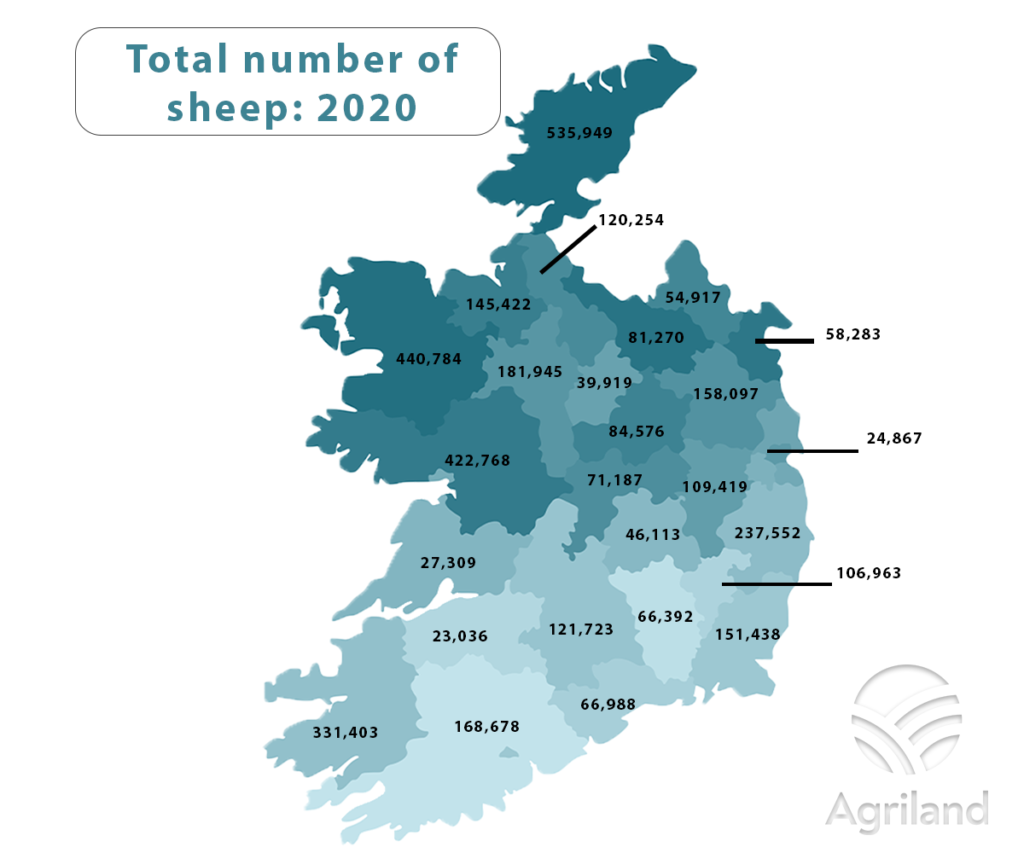The annual national sheep and goat census for 2020 threw up many positives – after what was a very bright year for the sector.
The data for the census, gathered by the Department of Agriculture, Food and the Marine (DAFM), showed a 2% increase in the national sheep flock compared to 2019.
Data from the 2020 census returns showed that 3.88 million were kept in 35,592 registered flocks at the end of 2020 – which was an increase of 2%, or 69,000 head on the 2019 figure.
One standout figure published was the 72,000 increase in the number of breeding ewes over 12 months-of-age.
With the total number of breeding ewes over 12 months-of-age standing at 2.64 million.
Strong sheep prices last year caught the eye of many and breeding sales last year witnessed outstanding prices – with many records broken.
Last year, many mart managers reported more and more beef farmers dipping into the store lamb trade and this, along with the increase in the breeding ewe flock, is reflected in the number of newly registered sheep flocks.
Another take from the census was that 500 flock numbers were reactivated.
This goes to show how positive the year 2020 was, with a renewed confidence shown in the sector.
Map: County-by-county breakdown of sheep numbers
If we take a look at the county-by-county breakdown of the total number of sheep, we can see that Donegal leads the way with a total number of 535,949.
The two counties with the next largest population of sheep are Mayo and Galway, with 440,784 and 422,768 respectively.
Finishing off the top five number of counties with the largest population of sheep are Kerry and Wicklow, with 331,403 and 237,522 respectively.
The counties with the lowest number of sheep are Limerick and Dublin, with 23,036 and 24,867 respectively.
A map of the total number of sheep by county can be seen (below).

